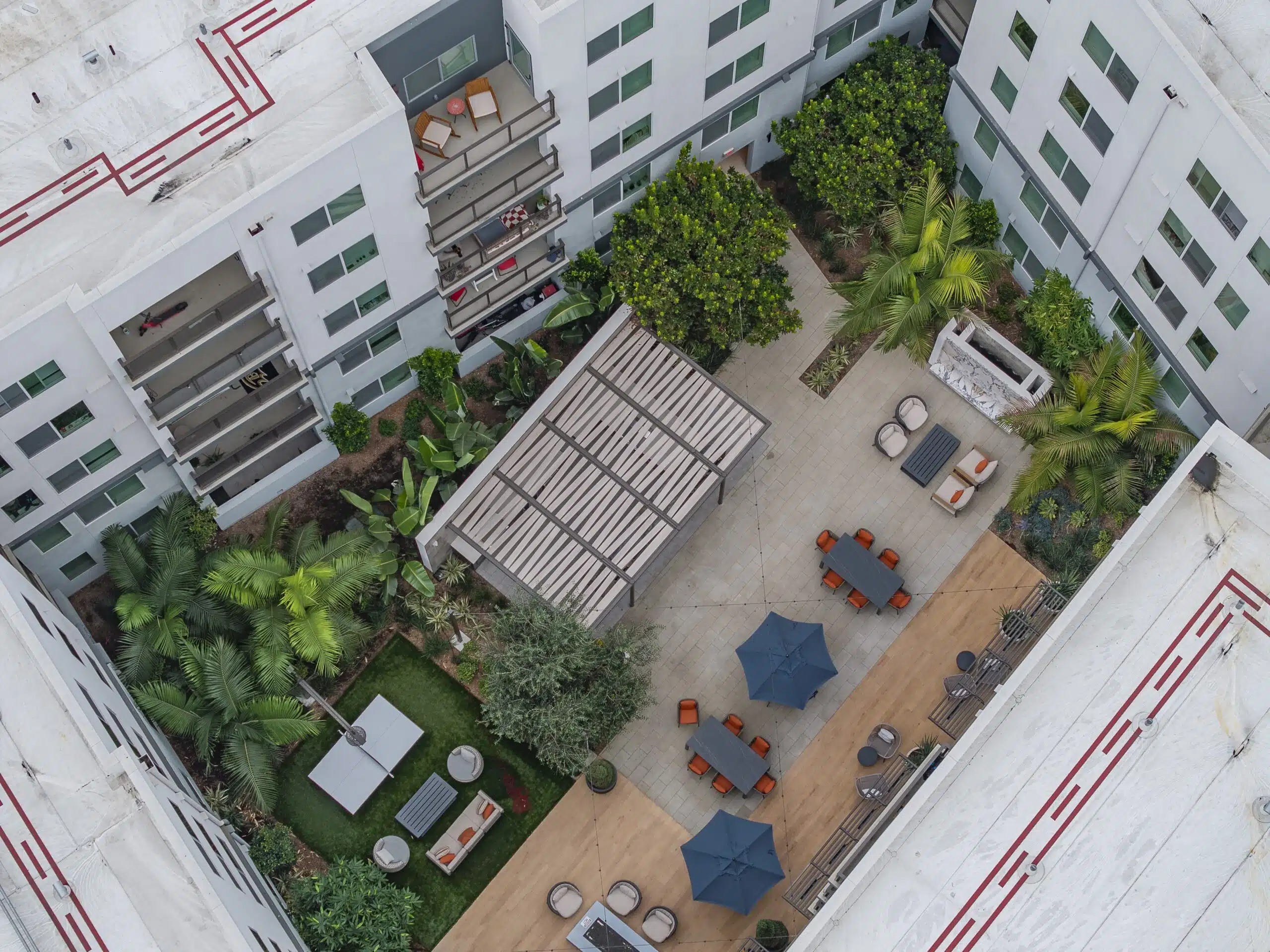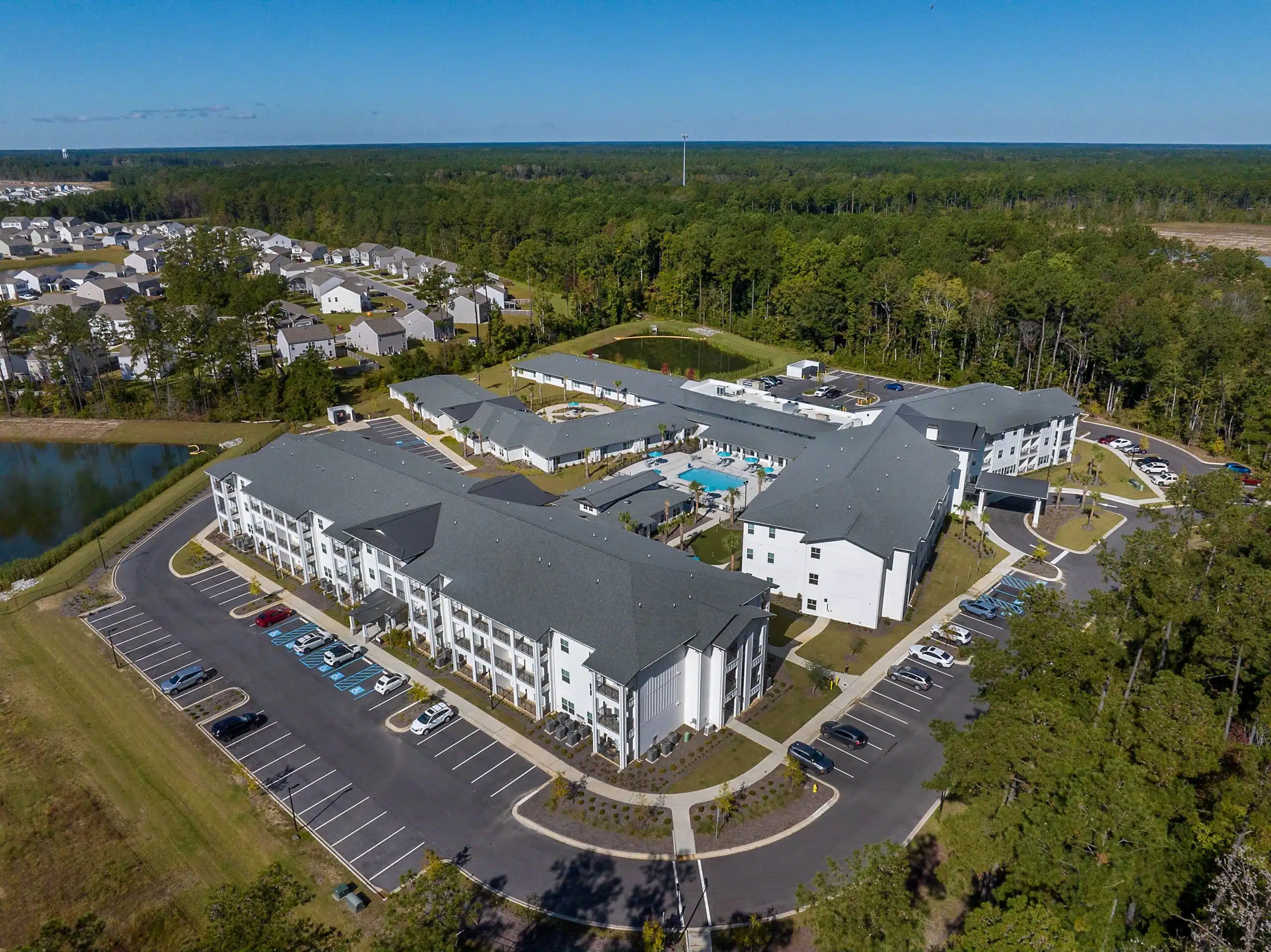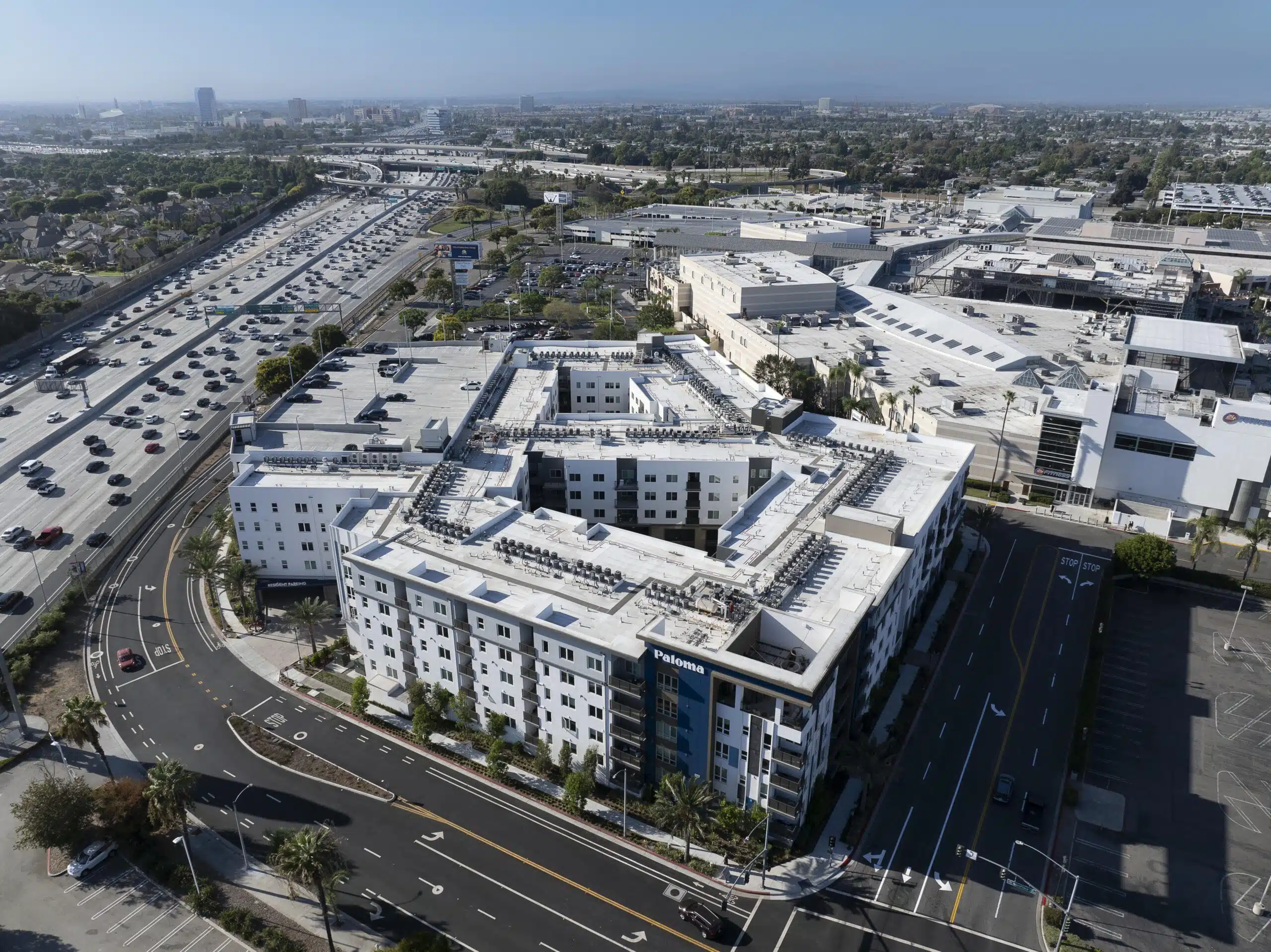- January 29, 2025
- Perspectives, Trending Topics
10 Recommendations for Multifamily Site Design Success


Meaghan McGee, PE, LEED AP
Civil Engineer

Sarah Scott, PE
Civil Engineer
This article was originally published in December 2020 by James Hall (now retired) and has been updated and revised in partnership with other multifamily practice leaders.
Multifamily projects can be very challenging from a site civil engineering design and coordination perspective. Whether the multifamily project is intended for market-rate, workforce, affordable, age-restricted, or student housing users or situated on an urban or suburban site, the projects are incredibly complex. There are more buildings, building types, plan changes, and points of coordination with other consultants than with most other projects. Agency regulations, zoning issues, and unwelcoming neighbors may further complicate the design, entitlement, and permitting process.
Without strategic planning and partnerships, each of these challenges is an opportunity to fall short. Our recommendations for multifamily project success are useful for emerging engineering leaders, developers, and industry partners to better optimize project timelines and budgets and help everyone involved be successful. Consider the following before beginning your next multifamily project:
1. Quickly eliminate projects that don't pencil out.
Perform a thorough site feasibility analysis. Check the zoning and allowable land use and make sure setbacks, open space, residential proximity slopes, densities, and other zoning criteria appear to be achievable. Confirm if there are onsite easements or other restrictions that will affect the design. Some other important questions to consider include the following: What are the impact fees, including parking fees or dedication requirements? What offsite improvements may be required? Are there access issues? Has the drainage been evaluated throughout the site? Are there timing issues associated with adjacent improvements or agency regulations? Are there floodplain issues or approved plans that are inconsistent with the project plan?
Turn over rocks early to find deal-breaking issues. If the site isn’t viable, decide early so the team can focus their efforts on a project that can get constructed quickly and profitably.
2. Be frugal.
Be practical and sensible while fulfilling your professional obligations to the public—keep your design simple, efficient, and buildable. Keeping construction costs down starts with good design and will make or break a project. For example, look for creative grading solutions that minimize underground piping, steps, and retaining walls; when possible, get the site earthwork to balance as well. Look for ways to lessen paving areas or reduce water tap sizes and the associated impact fees. The goal is to reduce engineering and impact fee costs and spend dollars where the future residents will benefit.
3. Prepare your own project-specific entitlement strategy and schedule.
Develop a realistic expectation of the entitlement timing and risk. Share what will be required from each member of the consultant team and when it is required to meet the agreed-upon schedule. Understand typical agency feedback and timing needed for comments or coordination. Plan for necessary pauses for pricing or funding pursuits and understand any key agency changes—like fee increases or code changes—that may significantly impact design or execution. Don’t rely on the City’s published schedule or un-attainable turn-around times that may sacrifice quality.

4. Ask probing questions about off-site improvements early.
Off-site improvements and easements have more potential to kill a project than on-site improvements because they are much more out of the team’s control and vary wildly from site to site. There are many elements to consider, including electric and gas investigations, off-site easements, water and sewer capacity, owner credits for off-site improvements, and alternative funding sources. If any of these elements are deal killers, make sure someone is vigorously pursuing a solution.
5. Make the site plan buildable.
The architect usually draws the first version of the site plan, so engage early with the architect and engineer to troubleshoot this plan in the due diligence phase and during preliminary design with preliminary grading plans, utility plans, and more. Understand utility easement and fire lane widths and access requirements. Site grading is key to the success of designing a multifamily project. If the grading is not right, the project will look bad, function poorly, be hard to maintain, and could expose the owner to ADA lawsuits, maintenance issues, and unhappy residents.
To support clarity and constructability, host a grading work session with the engineer, landscape architect, and architect. Don’t forget to reserve room for ponds, utilities, amenities, and easements from the start so they don’t have to be added later and cause a ripple of issues throughout the site. Think through site circulation, parking, and accessibility early on and adjust the plan as needed. Figure out how fire access, hose lay, trash pickup, and loading are going to work.
6. Think through the future residents’ experiences early.
It’s important during the early stage to keep in mind the future residents’ experiences—for instance, parking distribution around the site, dumpster and mail locations, sidewalks and paths to all amenities, ADA considerations, and gated areas. Creating a thoughtful design early will allow for a better finished product and experience when the site is open.
7. Coordinate with other members of the design team early and often.
It may sound obvious, but there is nothing more important than coordinating with the architect, engineer, and subconsultants, especially MEP, throughout the design and permitting process. You don’t want to get to construction and realize the architect has made changes to their buildings or plumbing which require alterations to approved site construction plans. Institute final coordination and plan reviews prior to the beginning of construction so issues are not uncovered in the field.

8. Develop strong relationships and a good reputation with jurisdictions.
Know the rules thoroughly and follow them. If you need an exception, make sure your requests are reasonable, clearly communicated, technically supported, made in a timely fashion, and backed by careful preparation so they have the highest chance of success. This will help you develop a good reputation, and the jurisdiction can know that when you ask for an exception, it is likely warranted and should be seriously considered. Work with City officials, not against them, for the best project solution—which is possible with a little extra effort, transparency, and preparation.
9. Clearly communicate deliverable expectations and processes.
Make sure the entire team understands the level of detail expected at each deliverable stage and produces deliverables that are as clear as possible. This way, bidders know what is expected and you can get reliable pricing. Additionally, civil team members will likely need to jump ahead of the design team based on jurisdictional permitting, so understanding what design information is needed at what stage—such as door locations or utility sizes and locations— is critical.
10. Keep up with building changes.
Building plans change frequently during the process, especially on multifamily jobs. Site plans are often submitted with very early versions that get updated after submission. Be proactive about asking the architect for changes early and often and update your plans accordingly, making sure you understand the true limits of the building. Does it have a stone or brick façade that will impact dimensions? Where are the doors? What are the elevations at those doors? What entries need to be accessible? If you don’t understand the building thoroughly, you have little chance of making the sitework complement it.
With hundreds of thousands of units designed across the country, our multifamily specialists understand the unique challenges of multifamily site design and how to overcome them. We hope that these recommendations streamline your next multifamily project and help you create residential spaces that people are proud to call home.
About the Experts

Meaghan McGee, PE, LEED AP
A civil engineer at Kimley-Horn, Meaghan has nearly 25 years of diverse engineering and management experience. She has extensive experience in the multifamily sector over all product types—high-rise to wrap to garden style—for all users, from affordable and senior to market-rate deals. Her diligence, agency knowledge, and passion for close coordination with all team and agency contacts has earned her high respect across the industry from clients and jurisdictions. She has a problem-solving attitude and a commitment to getting things done to support the success of the project for the team and communities in which we build. Additionally, Meaghan is an active member of Urban Land Institute (ULI) and National Multi-Housing Council (NMHC), and she actively works to connect partners across the country.

Sarah Scott, PE
A civil engineer at Kimley-Horn, Sarah has more than 15 years of experience designing and managing multifamily and mixed-use residential projects in Texas. Sarah specializes in multifamily design, having successfully completed over 60 projects ranging from garden style to “Texas wrap” and podium. Sarah is passionate about problem-solving for unique site layouts and complex design challenges and working with other team members to deliver a successful project. Known for her commitment to success and client service, Sarah has built an excellent reputation among her clients and peers. Additionally, Sarah is an active member of The Real Estate Council (TREC) and Associate Leadership Council Alumni (ALC), and she was a 2023 ENR Top Young Professional for the Texas and Louisiana region.
